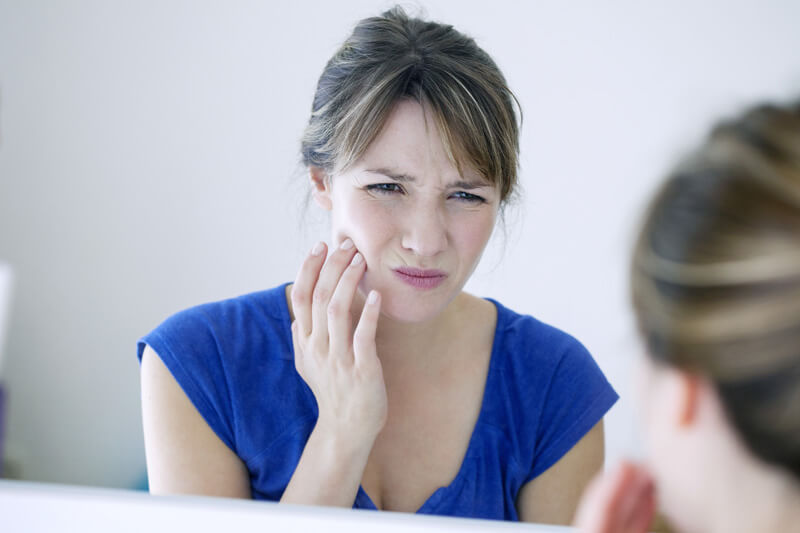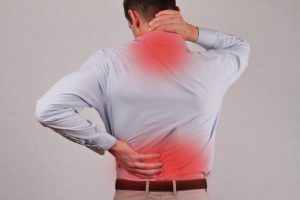Temporomandibular joint disorders: Why does the jaw hurt?

Disorders of the temporomandibular joint and muscles (known as TMD) are problems that affect the mastication joints and muscles that connect the jaw to the skull.
It is not uncommon to find in the emergency medical services some frightened patients because they cannot close or open their mouth and feel discomfort, without having suffered a blow to the face or suffering from some other disease. Given this, in many cases, this is a case of TMD.
Even so, ATMs, as well as the way affected patients respond to them, vary a lot, explains the specialist in Stomatology, Dr. Pedro Serrano Sánchez.
We can divide them into three main categories:
- Myofascial pain syndrome, which involves discomfort or pain in the muscles that control the jaw function.
- Internal asymmetry of one of the joints, by either a displaced disc, dislocated jaw or condylar lesions.
- Arthritis or degenerative and inflammatory disorders of the joints that can affect the temporomandibular area.
Although it is less frequent, in some cases a trauma to the mandible or temporomandibular joint plays a role in the development of this disorder. However, in most cases, the exact cause for problems of the joints and mandibular muscles is still to be found.
Symptoms:
- Pain that radiates from the face, jaw or neck.
- Stiffness in the muscles of the jaw, limited movement or blockage of the joint.
- Noises such as clicks that cause pain in the joint when opening or closing the mouth
What can you do?
- Eat soft foods
- Apply ice or cold cloths
- Avoid extreme movements (wide yawning, chewing gum…)
- Practice gentle jaw stretching and relaxation exercises to relieve stress.
- Pain relievers can provide temporary relief from jaw discomfort.
- Discharge or stabilization splints.
Some issues to take into account about TMD:
What is dental bruxism?
Bruxism is defined by the American Academy of Sleep Medicine as “repetitive jaw-muscle activity characterized by tightening or grinding of teeth”.
Despite the difficulty of distinguishing between the different types, bruxism is classified according to its appearance, its origin, its duration and the frequency of muscular contractions of the face.
To guide treatment, bruxism is usually classified as diurnal, nocturnal or combined. Diurnal bruxism refers to teeth tightening during the day. It occurs in 31% of the adult population mostly in women and occurs as a result of dental tightening (not due to grinding). Nocturnal bruxism refers to grinding during sleep and it affects men and women in the same way. Statistics highlight that only 13% of adults who suffer from
It are able to communicate it to the specialist because most of the time they do not have symptoms. In the combined form, patients tighten and grind teeth day and night.
How is the jaw or TMJ joint?
The jaw joint is similar to any other joint in the human body. It has common elements such as articular cartilage, ligaments and meniscus, which in the case of this joint is called the articular disc because of its small size.
Jaw pain is defined by being very diffuse and intense, making it difficult to perform a correct diagnosis. In this regard ,it is necessary to differentiate if it is a joint, or a pure or combined muscular pain. Sometimes they are mistaken for wisdom teeth pain or ear pain.
Usually, to treat the joint, the recommendation is to start with a conservative treatment in which the causes that may be generating the pain are avoided. Sometimes anti-inflammatory drugs, muscle relaxants and oral devices like discharge splints are used. These can help relax all the facial muscles and not overload the joint.
Joint pain and stress?
In case of joint pain without an obvious cause such as a blow or other systemic disease (such as rheumatoid arthritis), the level of stress and anxiety must be assessed.
Suffering anxiety and stress is very common in our modern societies. It can often have an emotional base or be due to alterations of some metabolic disease such as thyroid disorders.
When suffering from high anxiety or stress levels, the person cannot fully relax or enjoy moments of rest as he would naturally. They are also related to the appearance of signs or symptoms that at first seem to have nothing in common. Emotional stress sometimes produces physical signs such as hair loss, vomiting, migraines, headaches and pain in the jaw joint.
Is jaw pain frequent?
Jaw pain is common among population. As well as any muscle pain in the back such as low back pain or knee joint pain following strenuous physical activity, this type of pain can also appear on the face.
Almost all of the population at some point may suffer from orofacial pain due to muscle or joint overload. It is not uncommon to find in the emergency medical services some frightened patients because they cannot close or open their mouth and feel discomfort, without having suffered a blow to the face or suffering from some other disease.
Jaw joint pains may have an emotional stress base and can affect anyone among population in general, but statistically a greater frequency has been found in women primarily in adolescent or menopausal age.


